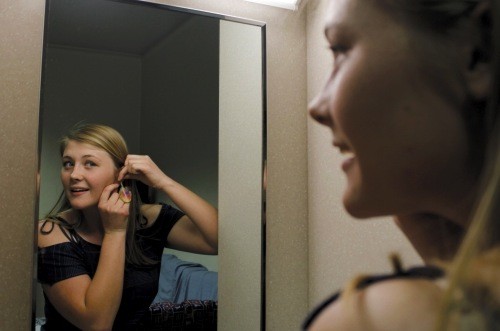What sparkles and shines on a student’s ear or wrist can lead to health concerns for a shopper on a budget.
A study conducted by the Ecology Center, a nonprofit safety organization, showed that more than half of low-cost jewelry found in retail stores like Forever 21, Claire’s and H&M contained high levels of hazardous chemicals.
In the study, 99 pieces of jewelry were collected from retail stores and tested using X-ray fluorescence, a process typically used to analyze chemicals found in products. Out of the 99 pieces, 58 contained high levels of one or more hazardous chemicals such as lead, cadmium, chromium, chlorine, mercury and arsenic.
“I think it is really sketchy they still use lead in jewelry to make it cheap,” said Katie Wilson, a pre-nursing freshman who wears earrings on a regular basis. “I guess that I am not too worried, but on the other hand I know children who wear their parents’ jewelry and I think it is insane to use lead.”
Of the pieces tested, 27 contained lead that exceeded the 300 parts per million limitation the U.S. Consumer Product Safety Commission has imposed on products for children. Exposure to this metal over time can cause lead poisoning and is especially harmful to pregnant women and young children, as exposure may result in irreversible brain damage during development, according to the Centers for Disease Control and Prevention.
“Women with high lead blood levels are more likely to have babies with learning and intellectual problems,” said Dee Quinn, director of the Arizona Pregnancy Riskline. “It doesn’t cause birth defects like structural problems, but it can result in intellectual impairment.”
Julie Glover, a graduate assistant for costume production in theater arts, said when selecting pieces for their actors to wear on stage, the only time they take into account what the jewelry is made out of is when an actor has a nickel allergy.
“We really don’t work with the pieces other than putting it on a actor,” Glover said. “We select things based on what is going to work for the show.”
In 2007, California passed a law that sets strict limits on the amount of lead allowed in jewelry products. While Arizona has no similar law, large retail stores like Claire’s have set the same California limitations for all of North America, said Amber Bruno, a member of the risk management team for Claire’s.
“A lot of the merchandise we have, we try to go above and beyond what the law requires for us to do as far as testing to make sure we are in compliance to avoid any type of chemical problems,” Bruno said.
Bruno also said that since the business started, there have been no incidences of consumers reporting side effects from chemicals found in their products like lead, cadmium or mercury. A majority of chemicals they use to make jewelry are natural resources people come in contact with regularly, she said.
“You could even go in your backyard and find these chemicals,” Bruno said. “But obviously if your child ingests it, then it can be hazard.”
Keith Boesen, director of the Arizona Poison and Drug Information Center, said lead found in jewelry is typically safe to wear as long as the person does not ingest or chew continuously on the product. Lead absorption through the skin when wearing jewelry is very minimal, he said.
“An example would be if a child were to eat a jewelry charm,” Boesen said. “Another thing is people tend to put things in their mouth out of nervous habit.”
Cadmium is also a chemical found in bulk jewelry because it’s inexpensive and sometimes takes the place of lead because it is less strictly regulated by the Consumer Product Safety Improvement Act. In the study, 10 out of the 99 jewelry pieces tested were found to have cadmium concentrations higher than 100 parts per million. Like lead, high cadmium exposure can result in neurological effects and is also associated with lung and kidney cancer and bone loss, according to the Agency for Toxic Substances and Disease Registry.
“We have heavy metals in our bodies like lead and cadmium, and when we have too much is when we have a problem,” Boesen said. “Because we can’t avoid it, the best thing we can do is to try to minimize the exposure.”
While people may be alarmed about the amount of metal found in their bracelets and earrings, Boesen said there is no need to throw out a jewelry box just yet. People who are concerned about the amount of lead or other chemicals found in their blood can take a simple test, which can be found in local hardware stores, to help determine if they need treatment. If people are not exhibiting signs of chemical poisoning, Boesen said, the jewelry they wear is probably safe.
“From an individual standpoint, if wearing jewelry causes high lead levels, it is very unlikely,” Quinn said. “But from a health standpoint we would prefer it to not be in the jewelry.”









